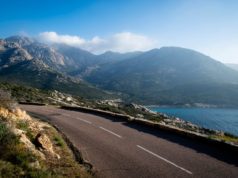The hardest braking point on the Marina Bay Street Circuit in Singapore is approaching Memorial corner. Here the driver has to decelerate by 229 km/h over just 131 metres inside 1.43 seconds. In the process, power of 2,203 kW gets released and the driver is subjected to 5.1g, while has to push with 155 kg onto the brake.
Jolyon Palmer says: “I love Singapore and it’s a totally different challenge from Monza. It’s a street race with close walls taking place at night so it’s a unique event on the calendar. I’ve raced and won there in the GP2 Series and it was one of my best wins. In fact, I raced there two years running and both years were very good. It’s a better opportunity for a stronger result.”
Renault Chief Technical Officer Bob Bell previews the Singapore Grand prix
What’s your preview synopsis of the Singapore Grand Prix?
Singapore’s a night race on a street course with 23 corners. The circuit is surrounded by a lot of barriers. It’s a race where drivers really have to be on their mettle. It’s tough for everyone as it’s hot and humid. For the drivers, it’s a long race on a bumpy circuit.
It’s tough on brakes and requires high downforce
But that said, there’s nothing to say that we shouldn’t put on a reasonable show. Over the course of the weekend one of our biggest challenges is understanding the car with the moving target of track surface evolution. This is the same with any street course and you can find yourself chasing your tail somewhat as it’s difficult to ascertain if any lap time improvement is from a change made to the car or just from the track surface improvement. For this reason you don’t want to change too much of the car set-up over the practice sessions. To have a strong Grand Prix you need to arrive with a good set-up out of the box so the drivers can gain pace through both their confidence and circuit evolution.
What kind of base set-up do you use as a starting point?
Most of the corners are low speed so that’s what we target with the set-up. It’s quite bumpy so you need to get a good set-up for ride then it’s fine tuning around that. If you have a solid base set-up the pace will come to you over the sessions as the grip from the surface improves and driver confidence grows.
Power Unit notes
- Singapore is one of the slowest circuits on the calendar, rating just above Monaco and Hungary in terms of the lowest average speed. With 23 corners, the average speed is around 165 kph.
- There are 82 gear changes per lap as opposed to just 52 in Monaco and just 44 in Monza. Due to the short bursts of power, eighth gear will only be engaged two times per lap. Only Monaco has a lower usage.
- In Singapore the ambient humidity can be well over 80%. In the past these conditions would have had a big impact on the power output, which decreases as less oxygen is available to burn. With the turbo engines, however, the turbo compensates for the lack of oxygen by spinning at a higher rate. In fact it will spin at around considerably faster than a comparable race run in dry conditions.
- The big stops on the lap are Turn 7 and 14 where the driver will brake from 300 to 110kph.
- There are few long straights and lots of opportunities to recover energy on braking via the MGU-K. The K may actually be used to propel the car to a higher torque level than usual allowing us to save fuel at this circuit, which is notoriously difficult on fuel consumption.
- Singapore has a notoriously humid climate and the water content in the air can be an oppressive 90%. Luckily, running in the evening will see the relative humidity reduce as the sun goes down. The electrical components of the PU will therefore be insulated against moisture and, in case of rain, the water will be diverted away using special ducts.






























